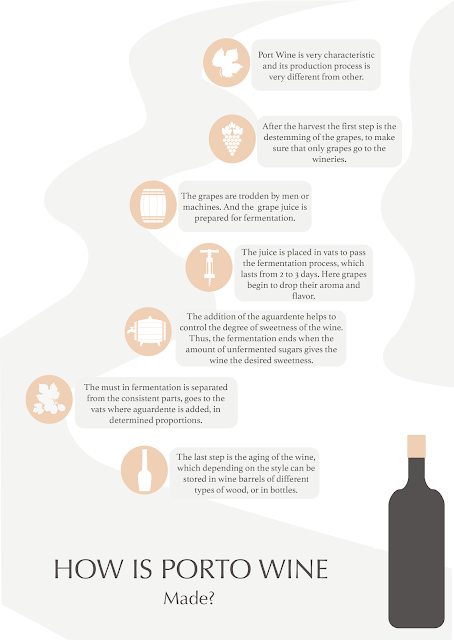How is Port Wine Made?
Port Wine has been part of Portugal’s history for many years and it is also appreciated by people from all around the world. For the more curious, Porto Tasty explains the process of elaboration of this drink.
Port Wine is a very characteristic wine, which differs from the so-called common wines. On the one hand, it is a liqueur wine, and on the other hand, it has a reduced time of fermentation and maceration that together and with the addition of aguardente must respect a set of rules.
Following the destemming, grapes are crushed and thrown into vats, where they are fermenting in a period of 2 to 3 days. During this period a reassembly is carried out in order to extract the maximum of the coloring matter.
It is important to point out that the processes of making white wine differ from the rest. In this case, the wine is aged under oxidative conditions (exposed to oxygen) and prepared with some maceration. If you want to preserve the pale white color and the fresh aromas, the maceration time is shorter.
Another important step in the elaboration of Port Wine: aguardentação. This attributes several benefits to the wine, such as improving the chemical-oenological stability and controlling the degree of sweetness of the wine. In this way, the fermentation ends when the amount of unfermented sugars gives the wine the desired sweetness.
It is fundamental to think of the type of aguardente added, since its chemical composition and its aromatic characteristics are essential to obtain a high quality Port.
The last step is the aging of the wine, which depending on the style can be stored in wine barrels of different types of wood, or in bottles.
To know more details about the elaboration of Port Wine consult the Wine Institute of Douro and Porto.
Glossary:
liqueur - which is high in alcohol, usually by the addition of aguardente during its preparation to interrupt its fermentation;
maceration - Which consists of dissolving a substance to a liquid form at room temperature;
destemming - taking the stem of the grape;
reassembly - an operation that consists of withdrawing the grape juice in fermentation from the lower part of the tank to throw it in the upper part of the same vessel, aiming its aeration and favoring the extraction of compounds responsible for the color as well as to promote the homogenization of the grape juice in fermentation.













